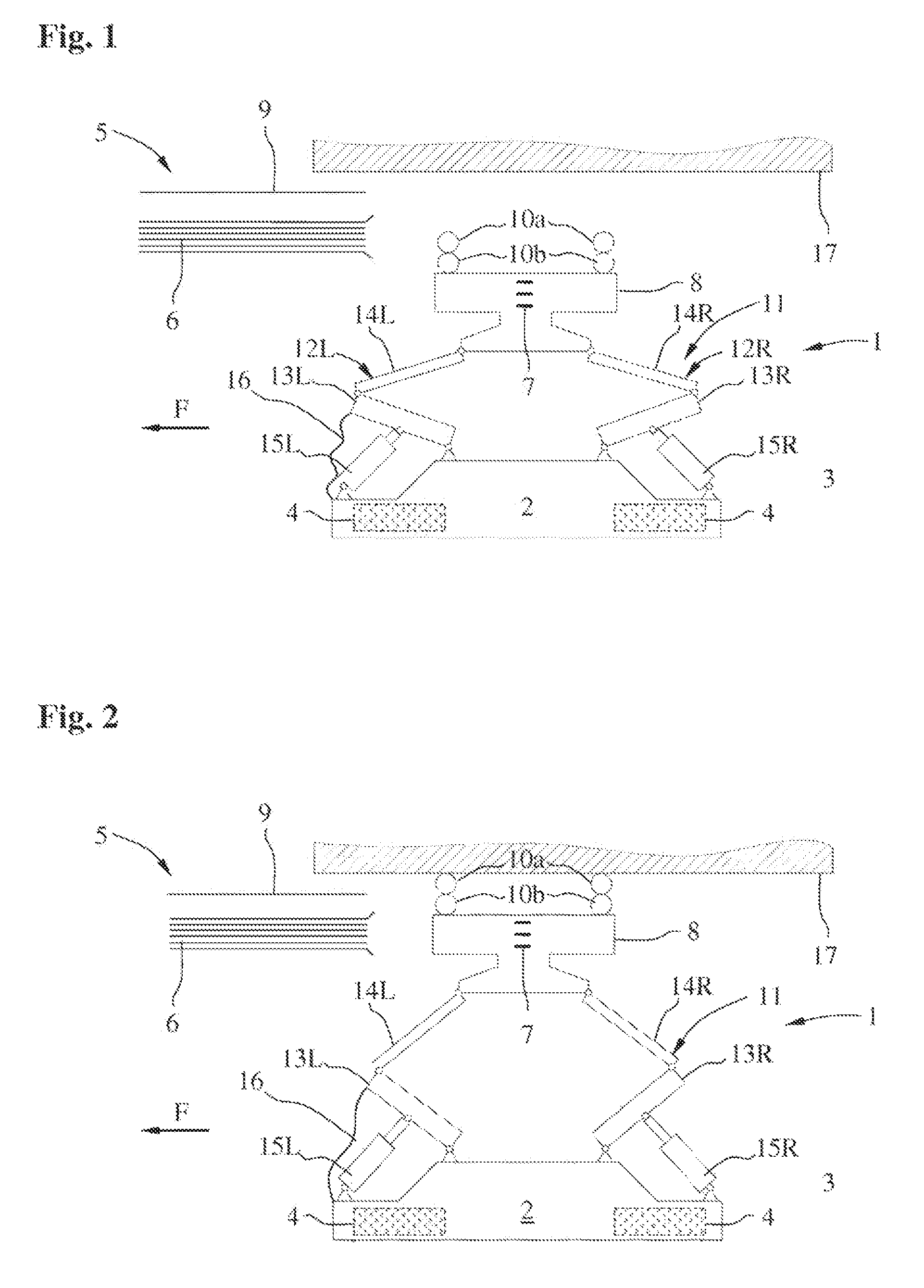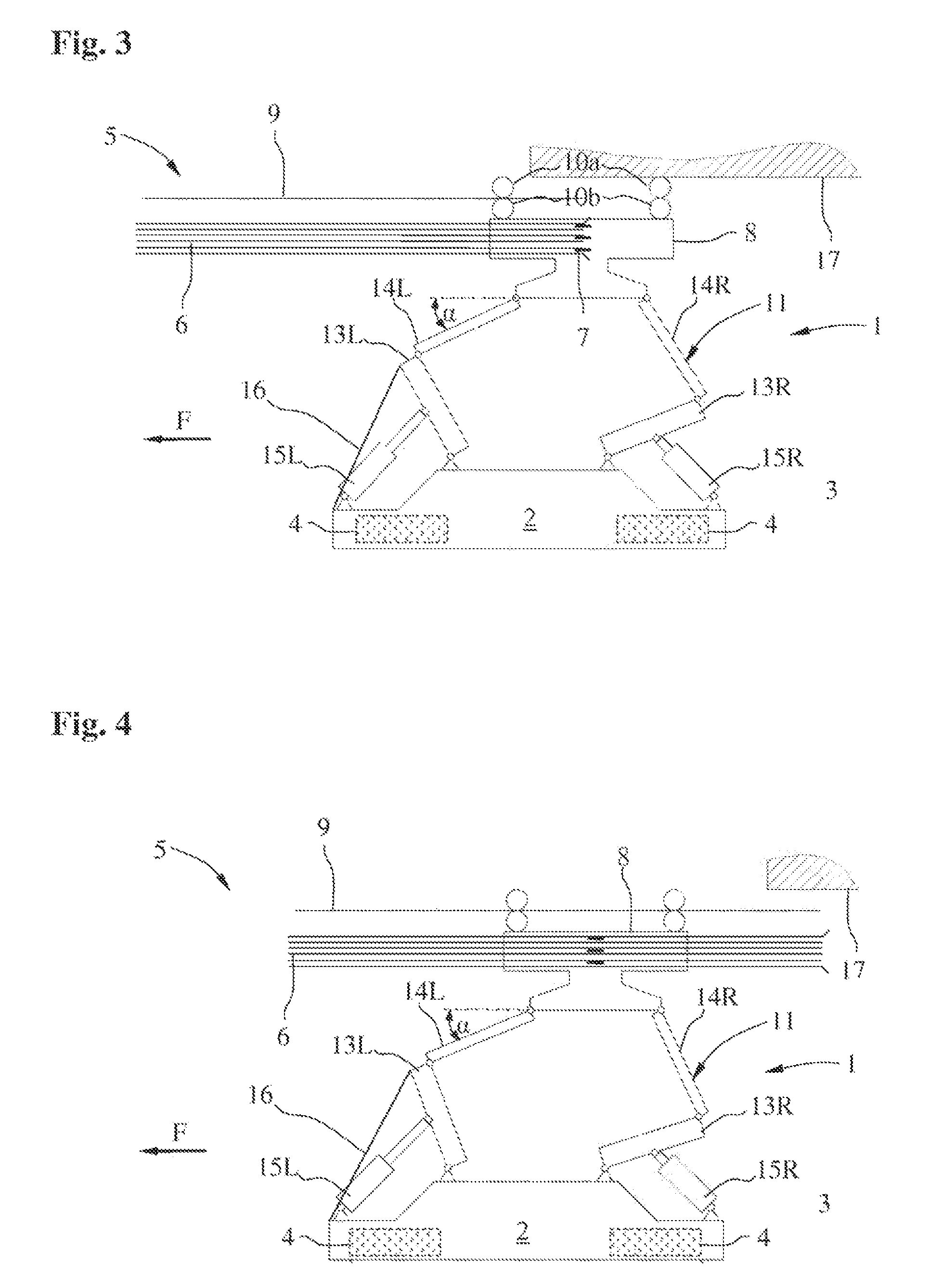Current collector and energy transmission system
a current collector and energy transmission technology, applied in the direction of power current collectors, electric vehicles, electric power, etc., can solve the problems of cranes, lines being wound and unwound, cranes cannot be displaced, etc., to achieve the effect of simple connection of current collectors and non-damaging displacement of current collectors
- Summary
- Abstract
- Description
- Claims
- Application Information
AI Technical Summary
Benefits of technology
Problems solved by technology
Method used
Image
Examples
Embodiment Construction
[0035]FIG. 1 shows a schematic top view of a first embodiment of an inventive energy transmission system with an inventive current collector 1 in an idle position.
[0036]The current collector 1 is mounted on a traveling pedestal of a crane 2 that can be displaced on the ground 3 in—and opposite to—a traveling direction F by means of an electric travel drive. In the drawings, the crane 2 is displaced on the ground 3 on graphically indicated rubber tires 4. The crane 2 may consist of a container-loading crane or an RTG crane.
[0037]A generally known conductor line 5 is provided in order to supply the crane 2 with electric energy via the current collector 1. The conductor line 5 features a plurality of voltage-carrying or current-carrying line branches 6 that are merely indicated in FIGS. 1-4. In FIGS. 3 and 4, sliding contacts 7 of a current collector trolley 8 of the current collector 1 engage into the line branches 6 from above in order to supply the crane with electric energy. One ex...
PUM
 Login to View More
Login to View More Abstract
Description
Claims
Application Information
 Login to View More
Login to View More - R&D
- Intellectual Property
- Life Sciences
- Materials
- Tech Scout
- Unparalleled Data Quality
- Higher Quality Content
- 60% Fewer Hallucinations
Browse by: Latest US Patents, China's latest patents, Technical Efficacy Thesaurus, Application Domain, Technology Topic, Popular Technical Reports.
© 2025 PatSnap. All rights reserved.Legal|Privacy policy|Modern Slavery Act Transparency Statement|Sitemap|About US| Contact US: help@patsnap.com



